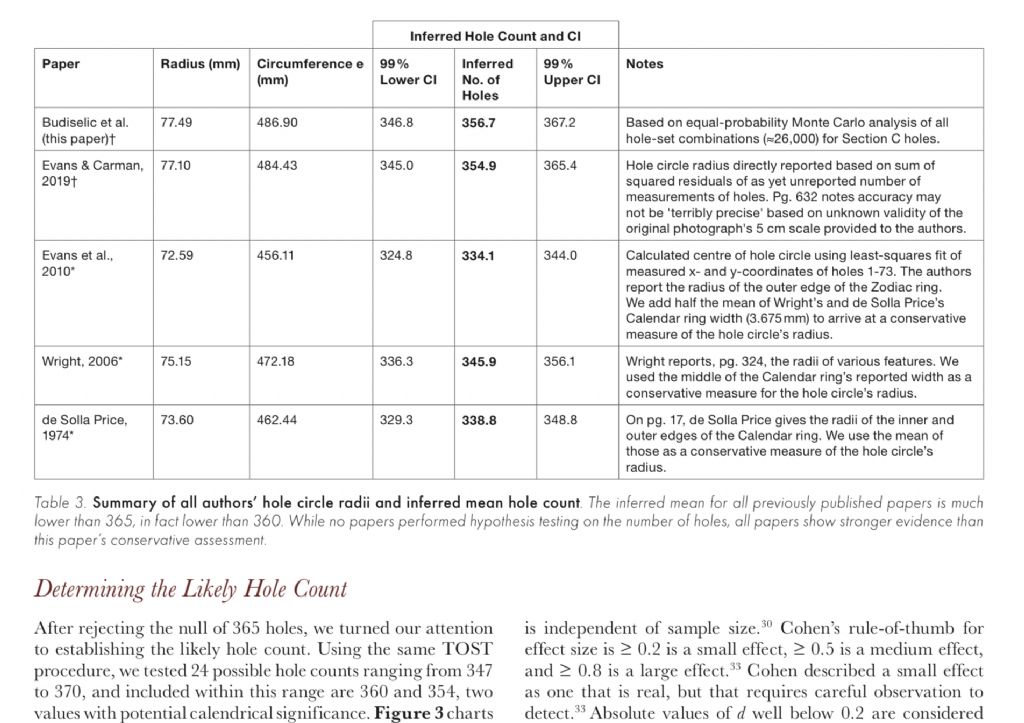Posted by Neil Wyatt on 10/10/2021 13:06:27:
…
They needed a circle of 'x' holes to step the mechanism around in 'x' steps per rotation.. Micron accuracy is not required, so there is no reason for them to go chasing it.
To me the obvious solution is scribe a ring, use a marked strip wrapped around a circumference as an index. Scribe or punch each hole, then drill by hand.
…
I agree, and I wonder if the practicalities of hole placing determined the size of the whole mechanism, said to be about the size of a shoebox. Could be all the mechanism's dimensions are driven by these holes deciding the size of the ring.
Shoebox width suggests a ring diameter of about 150mm. Using mathematics unknown to the Antikythera makers, we can easily calculate the angle and distance between holes. Assuming the lowest possibility (354), the angle is 0.983333333° and the spacing about 1.3314mm.
The Greeks didn't have our advantages. Their maths were restricted to whatever could be done with a plain divider and a straight-edge, which is a lot. But the workman's tools where behind greek mathematical technique – he had no graduated rules, screw-adjustable dividers or loupes.
Spacing graduations at 1.33mm by hand is quite challenging, and it may represent the smallest distance the Greek maker could see well enough to do the job.
To make the ring, I think he worked out a representative space between 8 or 10 holes (say 13.3mm), and used that to determine the approximate circumference of the ring by laying out a tape. The actual ring was turned with a somewhat larger diameter to accommodate a more carefully graduated tape.
A tape could be accurately graduated by rolling it around the newly made ring to mark the ends and then laying it out flat and dividing it into parts as described by Euclid, Proposition 9, Book VI I wouldn't attempt to mark all the holes by Euclid, perhaps marking every fourth hole would be done accurately and the others pricked in by eye.
Might also have been done by laying out a polygon, but this cramps the work because the diameter of the ring is divided into parts rather than the circumference, reducing the working length by over a third. I think Neil's way is easier and more accurate.
Dave
pgk pgk.





